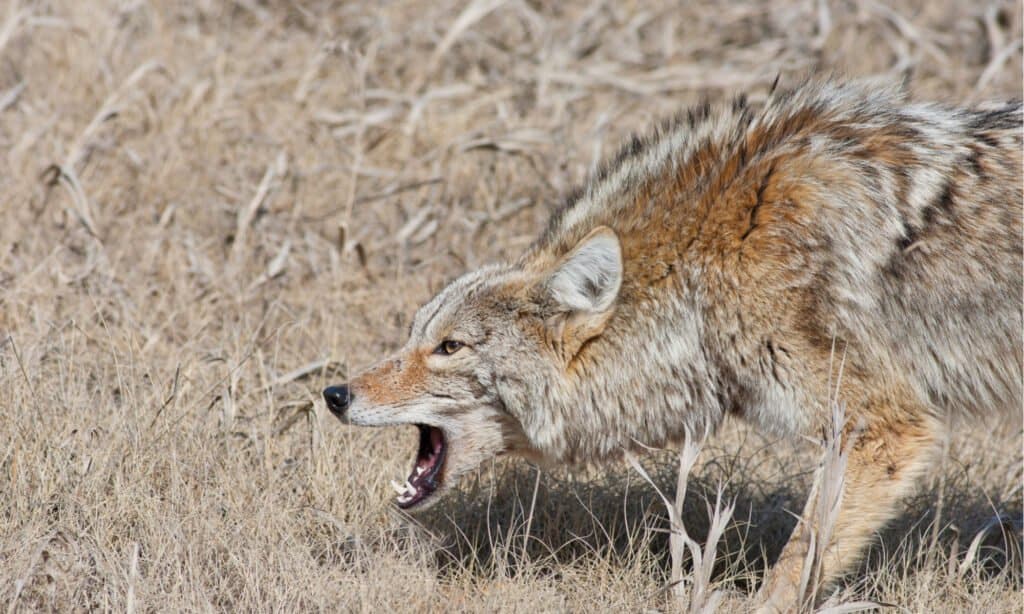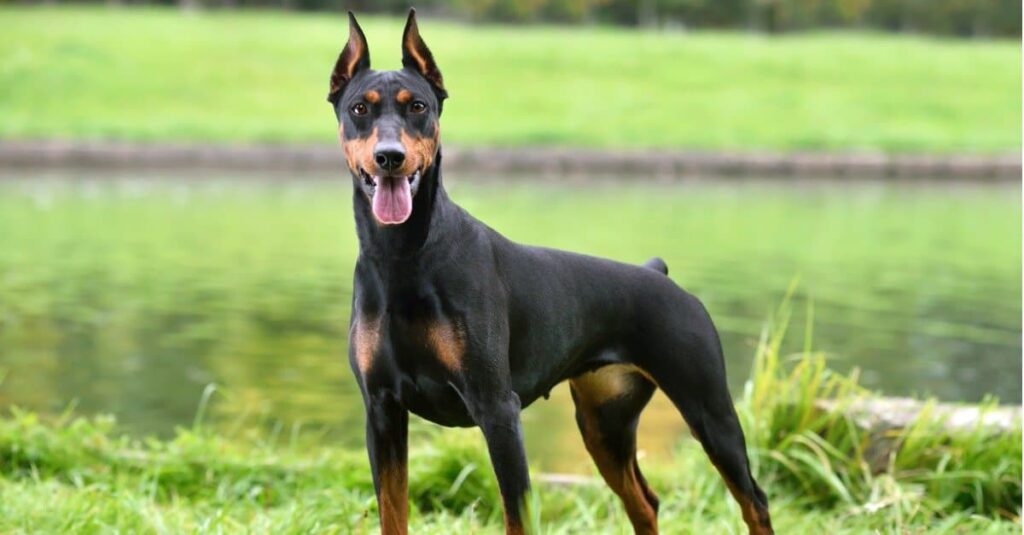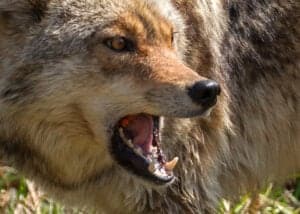Continue reading for our analysis...

Key Points:
- In the video below, a coyote engages with a pet dog in what could be seen as an aggression or a prank.
- Defending territory, protecting the pack, and mating rights are some reasons that dogs fight.
- A dog’s whine could mean it’s frustrated, feels separation anxiety, wants its owner’s attention, wants to go outside, or wants something it can see but can’t get to. Coyotes usually howl to warn intruders into their territory or to rally other pack members after a hunt.
A coyote can be as fierce as a wolf and as sly, sneaky, and clever as a fox. It’s also one of the most cunning wild animals. It’s, therefore, of little wonder that many folk and children’s stories depict the coyote as a trickster who never ceases to surprise.
Coyotes are known for intruding on yards and snatching away unattended pets, especially puppies and smaller breed dogs.
As the video below shows, they could also attack or play pranks on adult dogs.
Even though dogs have a keen sense of smell and can smell a coyote from a distance, the guard dog in the video doesn’t see the coyote coming.
The coyote hesitates for a few seconds before pinching the dog’s hind leg and running away. The dog doesn’t know what has pinched it, but it turns around defensively, chases the coyote for a short distance, and stops to avoid a fight with the coyote.

Coyotes are known for intruding on yards and snatching away unattended pets, especially puppies and smaller breed dogs.
©Brenda Carson/Shutterstock.com
Why Doesn’t the Dog Go After the Coyote Aggressively?
Dogs rarely engage in fights unless they have a good reason. Territory, protecting the pack, and mating rights are some reasons. Conflicts and attacks involving dogs can cause severe injuries to both animals, sometimes resulting in death. Consequently, dogs usually weigh the situation before deciding to engage or run away.
The guard dog in the video must have realized that the fight was not worth it and decided to scare the cunning coyote instead.
Even though the coyote is the one that initiated contact, it runs away with its tail tucked between its legs, which is a way of saying” Don’t hurt me” or “I am frightened” in dog language. The dog and the coyote are distant cousins and use similar communication patterns.
Perhaps the coyote expected the dog to respond kindly and even play with it. The dog wouldn’t have any of that.

Even though the coyote is the one that initiated contact with the dog, it runs away with its tail tucked between its legs.
©Jukka Jantunen/Shutterstock.com
The Coyote and Dog’s Communication Patterns
Interestingly, the dog in the video doesn’t bark, which is the typical behavior when someone or something unfamiliar enters or approaches their territory. One would expect the dog to bark to warn the coyote to stay away.
Instead, the dog makes a high-pitched sound as it approaches its owner.
Dogs usually whine when they:
- Want something they can see but can’t get
- Want to be allowed to go outside
- Feel frustrated
- Are separated from a companion they value (mostly human)
- Want the owner’s attention
The dog in the video must have been whining from frustration with the crafty coyote. Perhaps it was seeking its owner’s attention and intervention to make the coyote go away.
Similarly, the coyote howled at the end of the video. Coyotes usually howl to:
- Communicate with other coyotes when establishing a territory. The howl, in this case, serves to call the family together after spending time hunting individually.
- Advertise its presence, warning other family groups from trespassing on its territory.
The coyote in the video must have been howling to advertise its presence and perhaps warn the dog to stay away now that it had refused to engage it on friendlier terms.

One reason why coyotes howl is to communicate with other coyotes when establishing a territory
©Warren Metcalf/Shutterstock.com
Coyote vs. Domestic Dog: Who Would Win in a Fight?
If a coyote and a domestic dog were to square off in a fight, which would win? While the features of a coyote will generally be the same across the board, domestic dogs differ in size, strength, and ferocity based on breed and other factors. A typical coyote weighs from 20-50 lbs and can stand from 21-24 inches tall. Whereas, you could have domestic dogs that vary in size from a small chihuahua to a large Doberman Pinscher. Some domestic dogs like the latter are excellent watchdogs and would likely win if fighting a coyote. But a docile, smaller dog would be no match and may become the coyote’s next meal.
Coyotes are not typically aggressive. However, they are wild animals, and will always act to preserve their life or the lives of their young. Coyotes are also incredibly clever, persistent, and opportunistic hunters and scavengers. They see no distinction between domestic pets and wild animals — it’s all the same to a coyote. Depending on the size of the domestic dog, a coyote will either see a threat or a potential meal.
If you live in a territory where a coyote could encounter your pet, it’s best to always keep a watchful eye, especially if your pet is on the smaller, friendlier side. Hopefully, as in the video, an encounter between your dog and a coyote would come to naught. But never take chances when it comes to the safety of your domestic dog.

Dobermans are excellent watchdogs and might be able to win in a fight against a coyote.
©eAlisa/Shutterstock.com
Thank you for reading! Have some feedback for us? Contact the AZ Animals editorial team.





